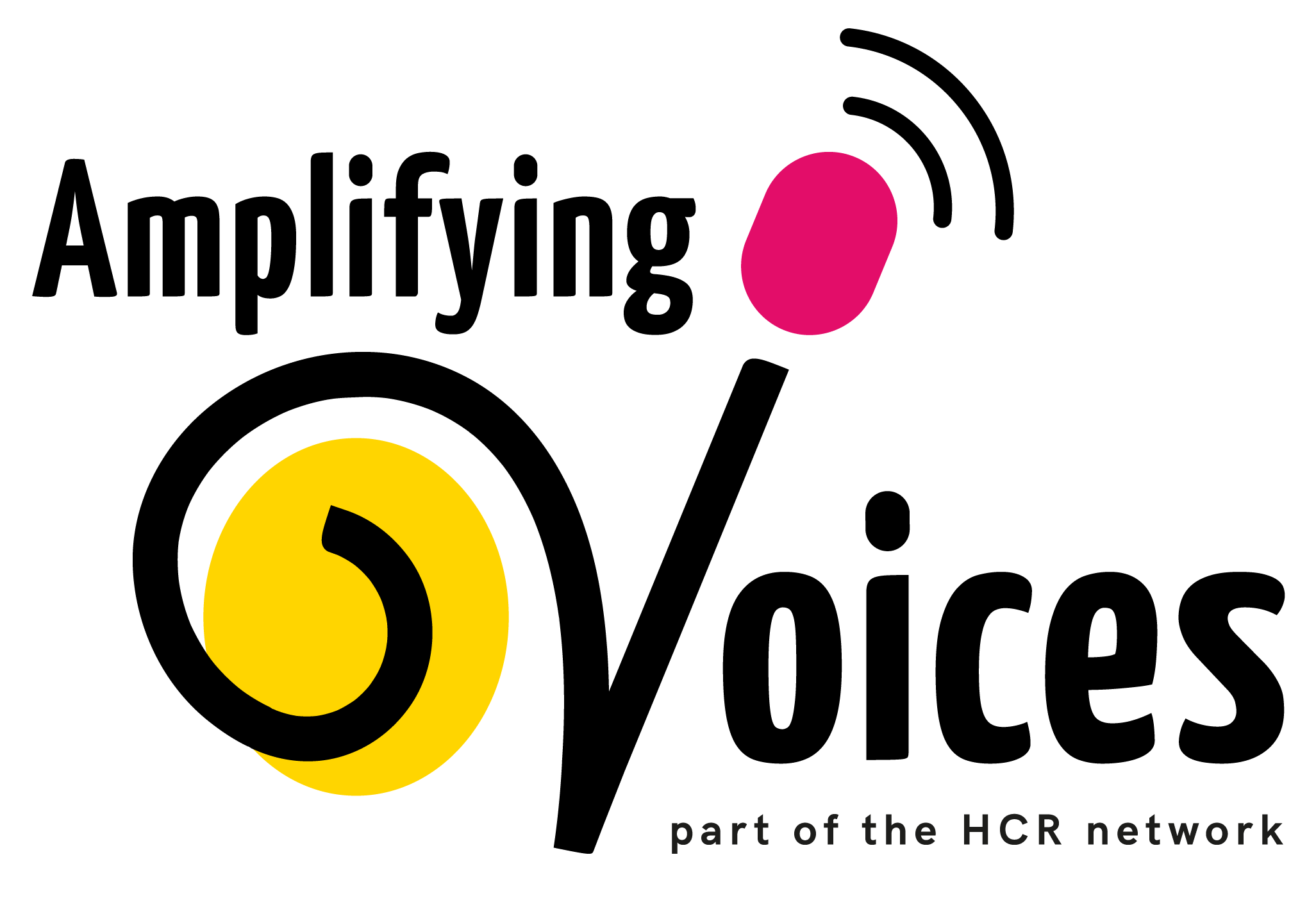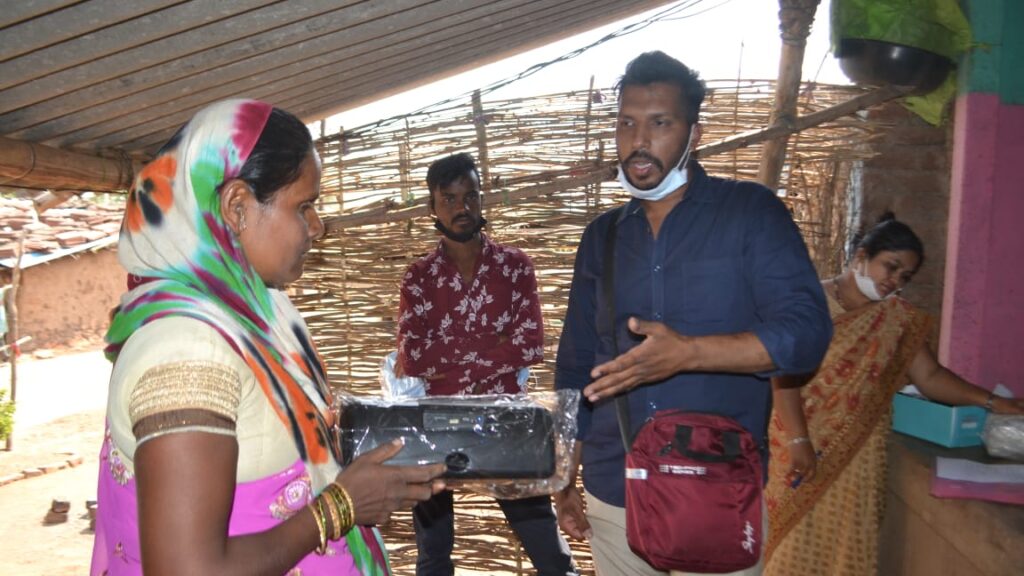
What is a speakerbox?
At Amplifying Voices, we use the term "speakerbox" to talk about a digital audio player with a built in speaker, suitable for group listening for around 10 people. Speakerboxes come in various shapes and sizes and most have a variety of options for playing stored digital audio content.
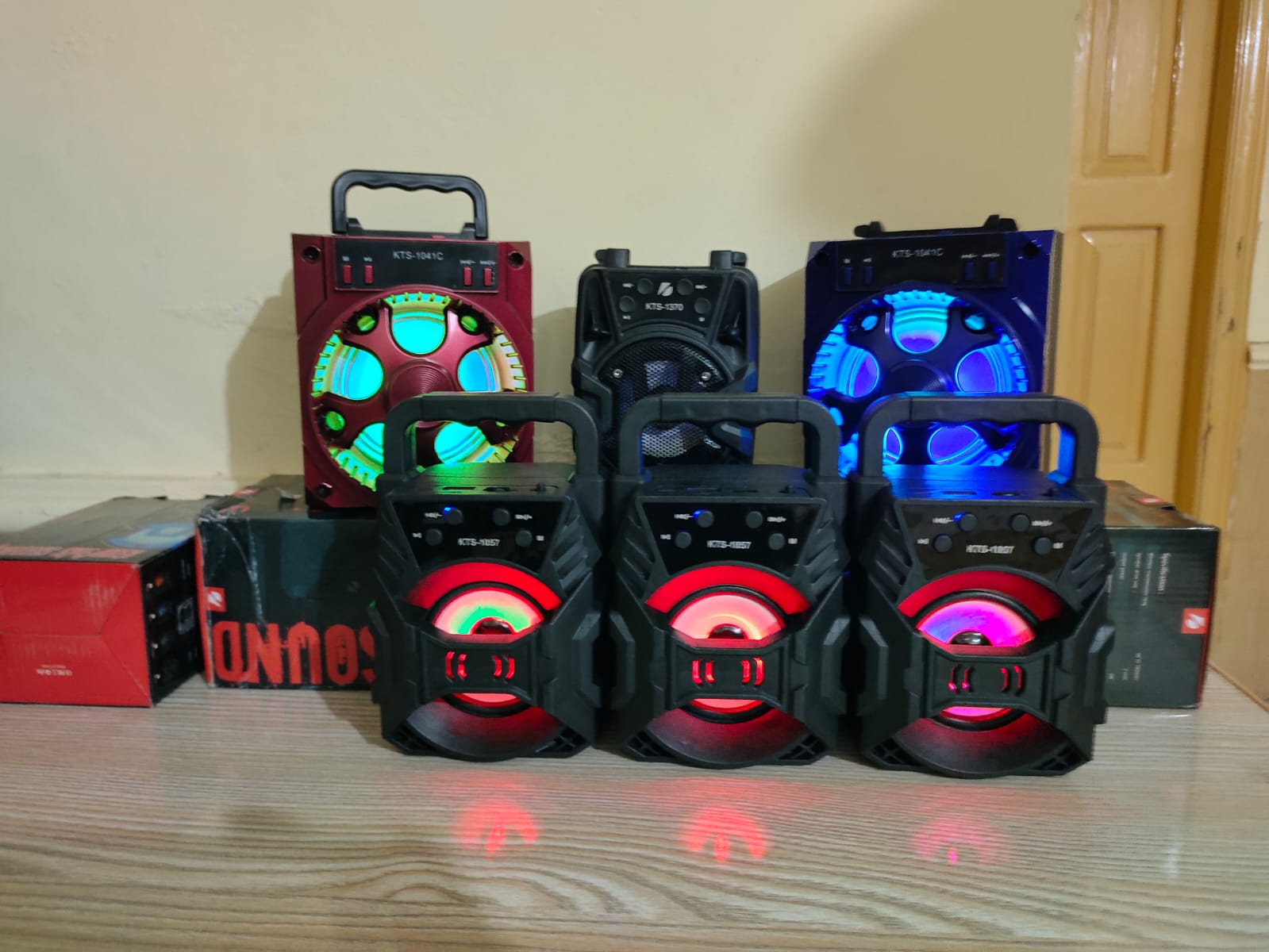
Amplifying Voices partners use speakerboxes with a microSD card slot (also called TF card, flash card, or μSD), and distribute new programmes on microSD cards to listener groups. We provide two microSD cards for each speakerbox so that one card stays with the group while the other goes to the partner to get the next programme downloaded.

Several hours of digital audio content can be stored on the tiny microSD cards. Digital audio can also be stored on USB sticks, on a phone or laptop.
Most speakerboxes also have USB ports to play audio files from a USB stick and can connect to a phone, laptop or MP3 player through an "Aux" input. An Aux cable has two 3.5mm jacks, which you connect between the Aux input and the headphone socket of your other device. Some speakers have Bluetooth for playing music or content from a phone.
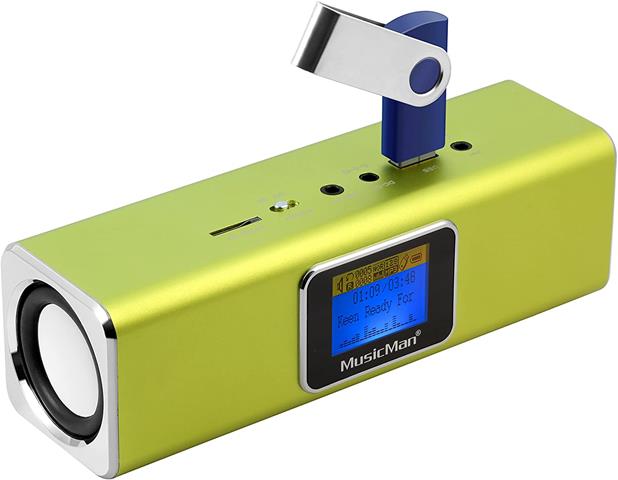
We now encourage partners to source speakerboxes that have an FM radio receiver built in, especially where projects have developed agreements to play programmes on local FM stations.
Why do we use Speakerboxes?
We started using speakerboxes in communities where it was not possible to set up a community radio station. However, we have since found that speakerbox projects can also offer some advantages over a radio station project.
Speakerboxes provide a very flexible way for groups of people to listen together to focussed programmes at a time of their own convenience. Groups can discuss content together, explore ideas for responding to advice or stories they've heard, and in many cases the groups also make content for future programmes.
Listener group gathers for a speakerbox session in Northern Uganda
Speakerbox content can be tailored to very specific audiences, and listener groups can work with producers to develop topics that are most important to the group. It can also cover topics a radio station might not see as profitable or even too risky or taboo to handle. As the speakerbox audience is usually smaller, and often know the production team personally, there is more scope for newly trained production workers to build their skills by making speakerbox programmes until their content is good enough for broadcasting on a partner FM station.
In Pakistan and South Sudan, content which is used on speakerboxes is also broadcast on local FM stations. This allows partners to increase reach and impact without having to set up their own radio station, while still benefiting from the flexibility and focus of speakerbox listening groups.

New Dawn health worker with speakerbox for women’s listener groups.
What is Digital Audio?
For the purposes of this post, digital audio means audio content including music, and talk show recordings, that can be stored as files on a computer, phone, or memory device. Digital audio can also be "streamed" over the internet. You might be familiar with MP3 files. MP3 is a form of digital audio.
So is a speakerbox programme rather like a podcast?
We have used the term "podcast" when talking about speakerbox programmes, because podcasts are a very close equivalent for most of our readers. However, podcasts are delivered over the internet, and speakerboxes do not have access to the internet. In the communities where we work, the term podcast is less well known, and listeners prefer to just call the programmes "radio programmes". In fact, in Northern Uganda and South Sudan, community members call speakerboxes "radios".
Is a Speakerbox basically an MP3 player?
So you remember MP3 players! They've more or less been replaced by phones now. In a sense, yes a speakerbox is a kind of MP3 player, but the term "MP3 player" usually means a small device designed for listening to with headphones. Some had small speakers on them, but they would not be suitable for group listening. MP3 players also have a lot internal storage where people could keep their music collections, and a user interface for navigating the different files. Most of the speakerboxes we use have no internal memory, no internet access, and very limited buttons for moving from file to file. This keeps the cost per speakerbox down, so more listener groups can get one. With bluetooth enabled speakerboxes, and distribution of programmes via WhatsApp (or in India, via the Adivasi Voices App), listener groups can use phones to control the speakerbox, getting the flexibility of an MP3 player and the volume and simplicity of a speakerbox.
What about power?
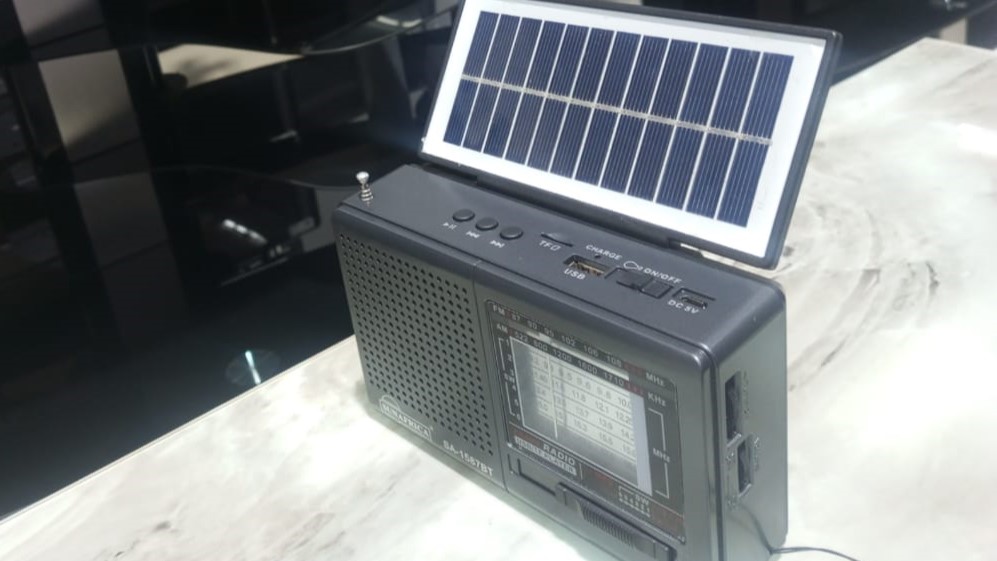
Solar powered radio speaker, Zambia
The early batches of speakerboxes we supplied to projects had built-in rechargeable batteries, and charged with a USB cable. However, in remote locations or refugee camps, access to power for recharging was problematic. We now work with partners to buy speakerboxes with solar panels. One partner told us they found it advisable to buy models with a removable solar panel, so that the speakerbox can be kept safely indoors while it is charging.
